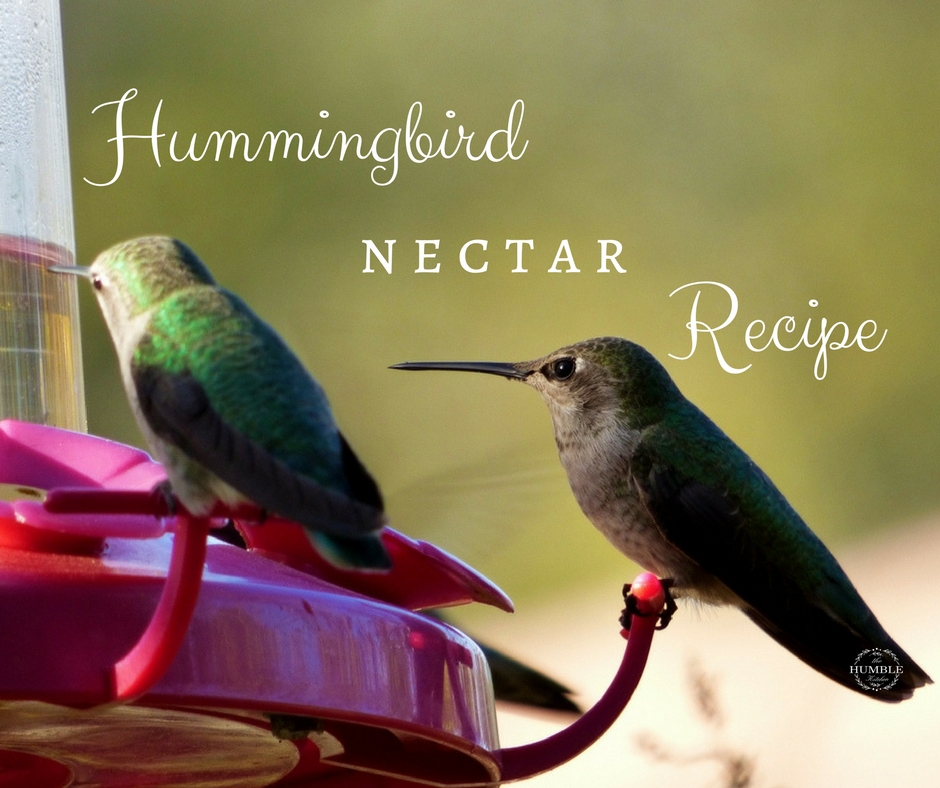Fuel up your feathered friends with this simple 2 ingredient hummingbird nectar recipe! Admittedly, this article is a bit offside of my typical eczema or (mostly) healthy recipes… but my inner animal lover just couldn’t help herself!
(..kinda like my inner cookie monster… )
But hey!
Little birdies (like inner cookie monsters) gotta eat too!
Plus, what’s better than eating a nice, beautiful meal outside in the sunshine while listening and watching the birds?
Not much, that’s what.
So what are we waiting for? Let’s get started!
P.S. Any major animal lovers out there? I adore feeding the birds and sitting outside just so I’m surrounded by more animals! Those little old ladies feeding pigeons in the park? That’s me in the future (just kidding, that’s me now).
Let me know in the comments how many animals you’ve got, or if you simply adore feeding the birds too!
- 4 cups of water
- 1 cup of white sugar
- Start by combining both ingredients in a large saucepan and bring to a boil.
- Allow the sugar to fully dissolve then remove from heat.
- Let the nectar cool before transferring to your hummingbird feeder.
- Store any remaining nectar in the refrigerator for later use
- Sit back and enjoy the lovely little birds visiting you!
To dye or not to dye, that is the question.
(and a heated debate, a little birdie told me)
The greatest concern about red dye for birds comes from not only the chemical itself, but how much the birds will consume. Although nectar is not a hummingbirds only food source (insects being another part of their diet, and just another reason to keep these birds around), it does make up the majority of their diet.
While no research points to dye being dangerous to birds, there is also no long term research revealing it’s safe. However, it is safe to assume that a birds metabolism and nutritional needs vary greatly from humans. Although red dye has been approved by the FDA for human consumption, it’s best to avoid adding it to your backyard bird’s dinner.
On top of it all, it’s important to note that natural nectar is clear, thus adding red dye is simply a unneccesary additive.
There are often complaints that hummingbirds won’t show up without red dye in the feeder. However this claim is unlikely. While hummingbirds do have a heightened sensitivity to red and yellow, unofficial studies have shown no preference to red over clear nectar.
Rather it is the sugar strength in the nectar, the cleanliness of the feeder, and distance away from percieved danger that play a much larger role in determining whether or not a hummingbird will feed at your feeder.
As for seeing red?
Some researches believe that the hummingbirds preference to red has become a conditioned response. After all, these little birds have an astonishing memory for the size of their brain -especially when it comes to food. They specifically seek out sources with the most energy (and with almost all commercial feeders being red), hummingbirds have began to anticipate high energy food when they see that color.
Rest assured that the red bases and floral decorations on your feeder will be more than enough to attract the birds. If desired, you can add additional red items nearby such as flowers, ribbons and ornaments to give your feeding area an added burst of color without any additional dyes!
Anna’s Hummingbird patiently waiting on a thorny branch. Photo: Dave Viklund
To keep our birdies happy and coming back, we’ve got just a couple things to do regularily.
- Change the nectar mixture every 3 – 5 days to keep the feed fresh.
- Be sure to check over your feeder over for any mold, ants, or other creepy crawlies everytime you change the nectar.
To clean your feeder:
- Rinse well with warm water
- Put a few drops of bleach into the water in your feeder
- Scrub with a bottle brush or a clean wash cloth
- Rinse thoroughly with clean water and let air dry
- Fill your feeder with fresh nectar
- Set outside for your feathered friends
That’s all there is to this simple hummingbird nectar (and some easy feeder upkeep)! Enjoy seeing these birdies daily, especially when you sit out on your deck eating summer dishes like the Smashed Blackberry Salad or the Spinach Raspberry Salad!
Health & Happiness,
Savannah
